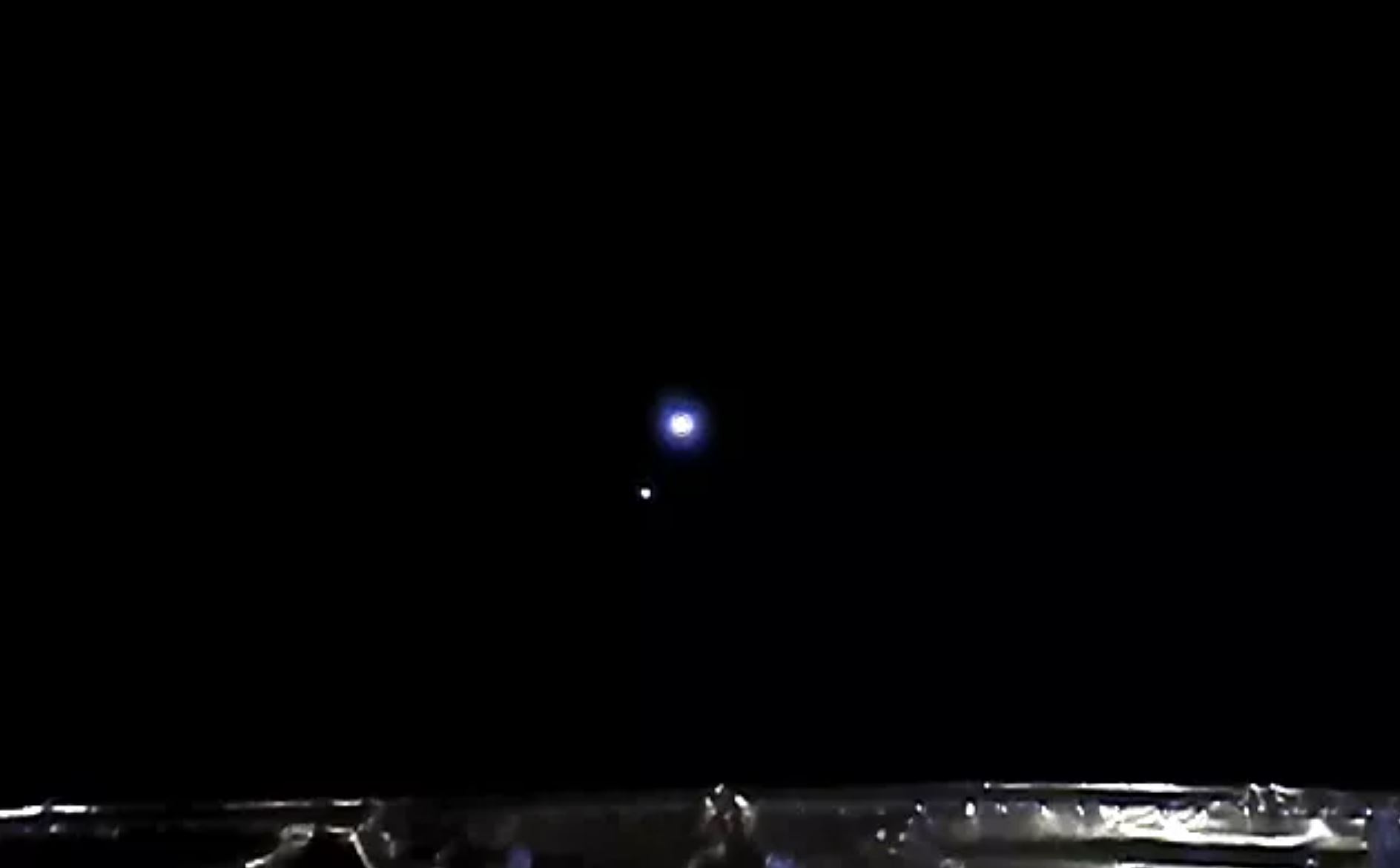China’s moon-sampling mission spacecraft is continuing its extended mission with its destination currently unknown.
HELSINKI — The Chang’e-5 orbiter module which facilitated China’s complex lunar sample return last year is on its way to the moon following deep space tests.
The orbiter, one of four distinct Chang’e-5 mission spacecraft, delivered a return module containing 1.731 kilograms of lunar samples to Earth Dec. 16 before firing its engines to deep space for an extended mission.
The Chang’e-5 orbiter later successfully entered an intended orbit around Sun-Earth Lagrange point 1, roughly 1.5 million kilometers, in March. There it carried out tests related to orbit control and observations of the Earth and Sun.
New data from satellite trackers now suggests Chang’e-5 has left its orbit around Sun-Earth L1 and is destined for a lunar flyby early September 9 Eastern time.
Chang’e 5 is rapidly returning to the Earth-Moon system. Amateur observations of the radio signal have allowed it’s position in space to be precisely determined. Here’s an animation of the trajectory of CE5 until lunar periapsis. pic.twitter.com/8cF7Qt02cZ
— Scott Tilley (@coastal8049) September 5, 2021
It was noted that Chang’e-5 may have altered its orbit Aug. 30 based on observations by and data from amateur satellite trackers Daniel Estevez and Scott Tilley and independent astronomy software developer Bill Gray.
The spacecraft is under the control of the Beijing Aerospace Flight Control Center (BACC), which is responsible for telemetry, tracking and command of spacecraft. BACC has not yet provided an update on the plans for Chang’e-5.
Potential maneuvers such as entering lunar orbit, heading for another Sun-Earth Lagrange point or an Earth-moon Lagrange point depend on how much propellant the orbiter has remaining. Another possibility could be using the flyby to set Chang’e-5 on a trajectory to flyby 469219 Kamoʻoalewa, a quasi-satellite of Earth and the target for China’s 2024 near Earth asteroid sample-return mission.
Jing Peng, deputy chief designer of the Chang’e-5 spacecraft system at the China Academy of Space Technology (CAST), said during the Global Space Exploration (GLEX) conference in St. Petersburg, Russia, in June, that a visit to a planetary body such as Venus may not be possible due to a lack of propellant.
“I don’t think there will be many opportunities for the orbiter to perform more complex orbit maneuvers with other bodies,” he said. “I think it will stay in Lagrange point 1 or the Earth-moon system,” Peng said.
Samples collected by the Chang’e-5 lander from near Mons Rümker in Oceanus Procellarum in the northwest of the near side of the moon are now being analyzed. Applications for sample materials are now open to domestic and international institutions.
NASA currently has no plans to trade any of its Apollo-era lunar samples with those returned by China’s Chang’e-5 mission, although the agency’s chief scientist Jim Green expressed hope for such an exchange in the future.
China is planning a followup lunar sample-return, Chang’e-6, in 2024 which is nominally part of the joint China-Russia International Lunar Research Station. The French space agency will contribute a science payload to Chang’e-6.
China’s Lunar and Planetary Data System earlier this month provided a rare update on the ongoing Chang’e-4 lunar far side mission. The Yutu-2 rover has now covered roughly 799 metres across 33 completed lunar days since landing in Von Kármán crater in January 2019.
At last, a Chang’e-4 update: Lunar day 33 was completed as planned in August, with Yutu-2 advancing to a total drive distance of 799 metres. Last info was 738.6m after day 31. Rover still moving well. https://t.co/T5gRlKt3Ac https://t.co/UDIdLhqsEx
— Andrew Jones (@AJ_FI) September 3, 2021
